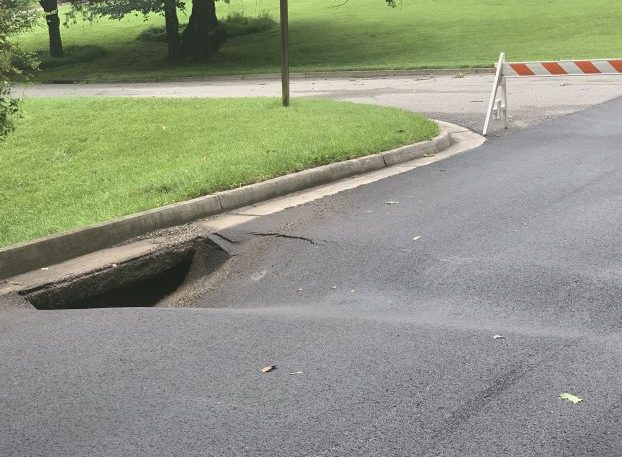The Farmville Blueway Is A Current Event
Published 4:36 pm Tuesday, May 14, 2013
FARMVILLE – The Friends of the Appomattox River (FAR) and the Town of Farmville are collaborating to let everyone in on a secret.
The Farmville Blueway, a protected stream corridor managed for conservation and recreation.
Don't keep it to yourself.
Trending
The Farmville Blueway's four miles include Wilck's Lake, Buffalo Creek and the Appomattox River, allowing paddlers three route options, the longest trip beginning at the Wilck's Lake boat ramp and finishing up at the boat ramp on the Appomattox River at Riverside Park. (A full description of the three alternative routes concludes this story).
Since the Town of Farmville included the blueway in its 2003 comprehensive plan for open space “the Friends of the Appomattox River has largely enjoyed this water trail all to themselves. We think it's time to share this treasure with the rest of the community,” Damien Fehrer told Town Council during its May meeting last week.
Fellow FAR member Chuck Green added, “The Friends of the Appomattox consider the blueway to be a hidden jewel that is yet to be discovered… Most of the members of the community are unaware of this.”
That is changing.
FAR, which suggested the blueway 10 years ago and has spearheaded its development, is partnering with the Town, following a unanimous vote by Town Council, to promote the blueway in a big way, to give the blueway Blue-ray-like visibility and high definition through a combination of brochures and signs.
“The Friends of the Appomattox is prepared to underwrite the cost to purchase these items,” Fehrer said of the signs and brochures, and “we'd like to ask the Town for assistance in locating and installing the signs.”
Trending
Town Council agreed.
FAR, a volunteer organization, has been maintaining the water trail and will continue to provide trash collection and light trail maintenance, Fehrer pledged, asking only that the Town provide assistance, if asked, if circumstances required added manpower.
Town Manager Gerald Spates thanked FAR for all its assistance “given us in past. I think it's a very worthwhile project and I'd like to recommend to council that we approve it and work with the Friends in getting the blueway established.”
The vote to do so was unanimous.
FAR, Fehrer explained, believes that “promoting the blueway and making it accessible will serve the public interest and add vitality to our community by making an area that is rich in natural and human history available to all to discover….
“The blueway designation,” he continued, “will help assure a healthy future for the river while providing educational and recreational opportunities for the community. It will also allow our community to reap the economic and social benefits from the river while maintaining its natural, historic and scenic value.”
The blueway's historical highlights, as enumerated on the FAR website, include a canal, a navigable channel dug around the dam, still visible (it can be seen from High Bridge Trail next to the former Prince Edward Mills building), from a point just below Buffalo Creek to an area 1,000 feet below the dam. It was dug for batteaux travel as a safe bypass of the dam.
Israel Hill, a community of 90 free African Americans in the early 1800s, is also near the blueway, a community established on 350 acres by the will of Richard Randolph, a community that remained vibrant well into the 20th Century.
The Smith-Taylor Mound, the site of prehistoric inhabitants of the county, is also nearby and has yielded many artifacts from people who lived there between 8,000 and 300 years ago.
An abutment of an old narrow gauge railroad line is also still visible, the 92-mile line built in the 1880's to link Farmville with Bermuda Hundred on the James River.
The three alternative trails in the Farmville Blueway, as described by the FAR website, are:
Route one-The Wilck's Lake Circuit, with an estimated paddling time of 1.25 hours, begins at the east end of Wilck's Lake from the boat ramp, paddling to the southwest corner of the lake, portaging across the embankment where marked, entering Buffalo Crrek and paddling back downstream to the take-out above the West Third Street Bridge.
Route two-Wilck's Lake to Riverside Park, with an estimated paddling time of 1.25 hours, finds paddlers entering Buffalo Creek above the West Third Street Bridge, paddling downstream to the take-out at Riverside Park. The canal may be paddled as an alternate route. However, if the water is low the canoeist may have to pull their boat across shallow areas in the canal. The boat take-out at Riverside Park is just upstream from the confluence of the canal and the river.
Route three-the complete blueway trail, with an estimated paddling time of 2.5 hours and basically combining routes one and two, begins at the east end of Wilck's Lake, paddling to the southwest corner of the lake, with the portage, as in route one, across the embankment to Buffalo Creek, floating all the way down to the Riverside Park take-out, offering the same canal option as route two.





